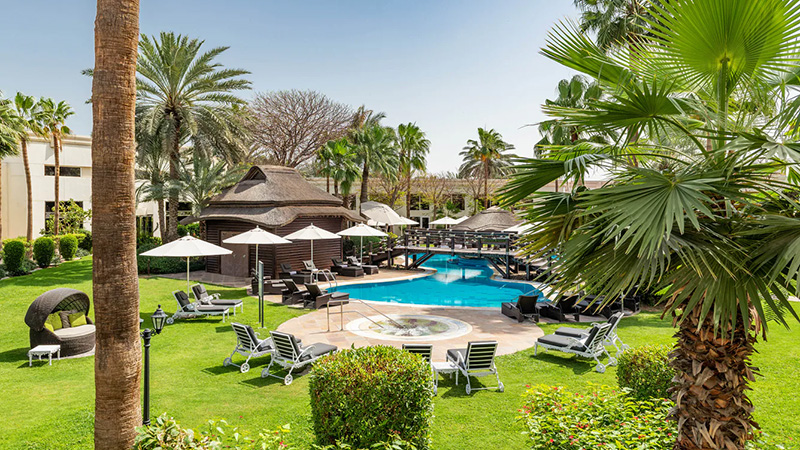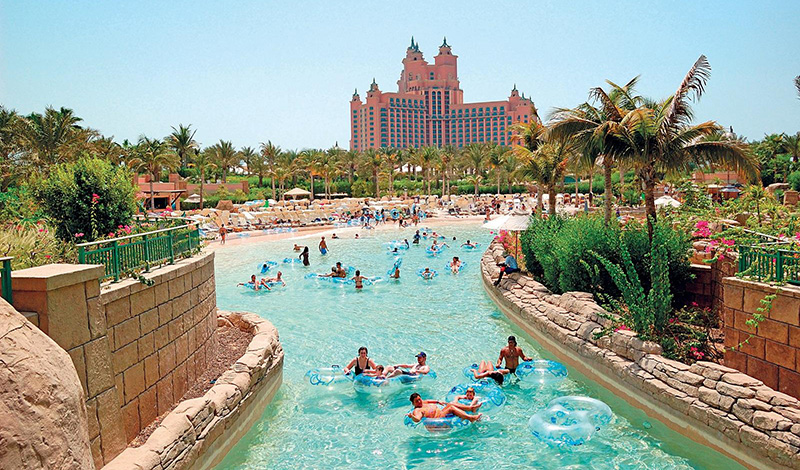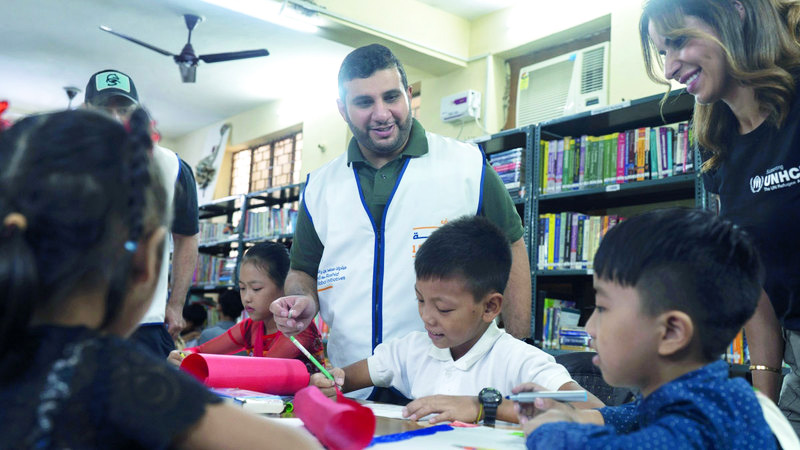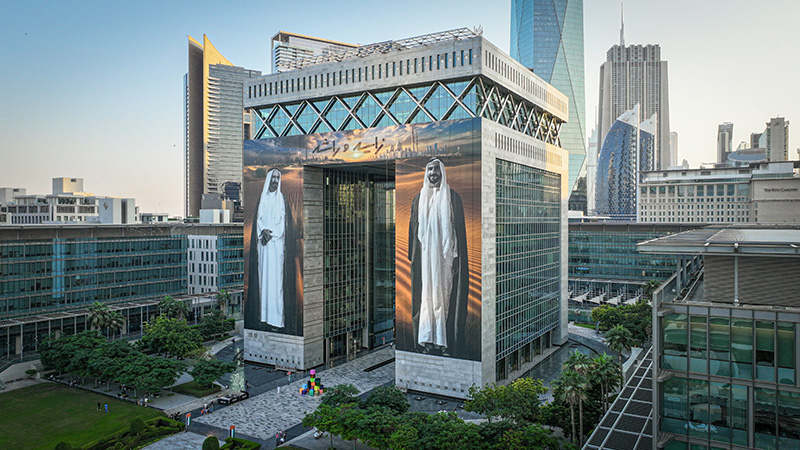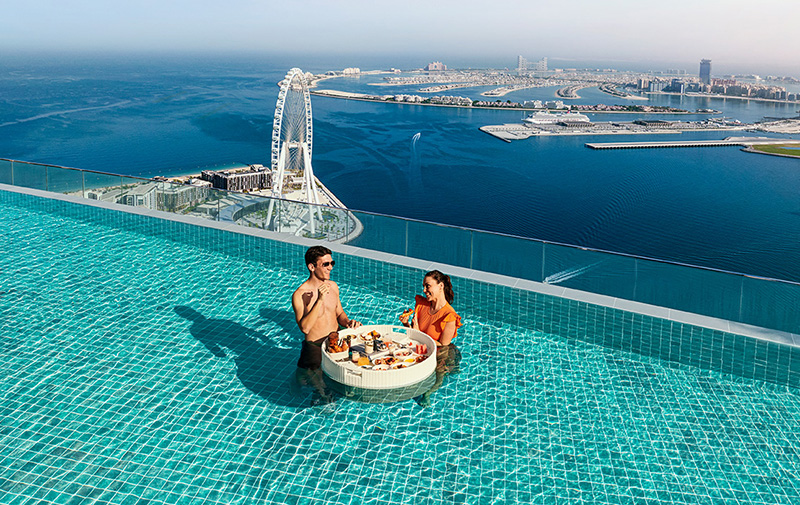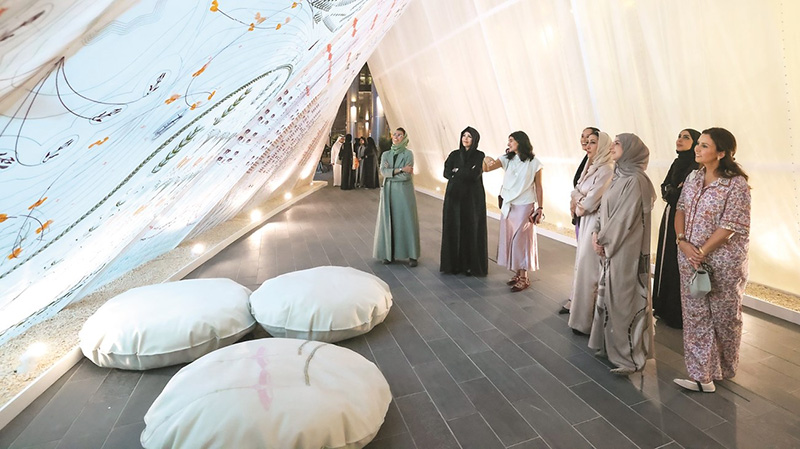
At the turn of the millennium, Dubai entered a new phase of strategic development marked by a comprehensive vision that redefined its vital sectors — foremost among them, healthcare. Dubai Healthcare City (DHCC) emerged as one of the flagship initiatives of this era, not only offering advanced medical services but serving as an integrated platform for medical education, scientific research, and health tourism. Over the years, DHCC has evolved into an urban model balancing economic development with quality of life, all within a broader strategy to diversify the economy and cement Dubai’s position as a regional and global center for specialized services.
In a landmark move, His Highness Sheikh Mohammed bin Rashid Al Maktoum, Ruler of Dubai, announced the creation of Dubai Healthcare City, with the aim of transforming the emirate into a world-class hub for healthcare, medical education, and life sciences research. The project was launched with a total investment of $1.8 billion and a first-phase footprint of five million square feet, expanding to ten million in its final phase.
“Health is the most valuable asset a person has. Without good health, individuals suffer — as do their families, communities, and ultimately, the national economy,” Sheikh Mohammed remarked.
Officially launched on November 6, 2002, the project was initially developed by the Dubai Development and Investment Authority. By 2004, the first phase was completed, and DHCC was integrated into TECOM Group under Dubai Holding, led at the time by H.E. Mohammed Al Gergawi.
The success of DHCC can be largely attributed to the synergy between government leadership and private sector investment. The public sector provided the strategic vision and regulatory framework, while private entities contributed capital and operational expertise. This model accelerated execution, attracted prestigious global medical institutions, and helped raise the quality of services and foster a competitive, innovation-driven environment.
In 2005, a memorandum of understanding was signed between DHCC and Dubai’s Department of Health, outlining an integrated framework that linked healthcare delivery with medical education, research, and hospitality. Under this model, 70% of services would be provided by the private sector, with the government delivering the remaining 30%. Although DHCC was not designated as a free zone, it offered full foreign ownership — a key incentive for investors.
Reflecting on the initiative, Sheikh Mohammed remarked: “I am confident that our people leading this effort will succeed, just as our ancestors did more than a thousand years ago, when they gifted humanity some of the greatest achievements in medicine, surgery, and hospital management.”
DHCC was launched in tandem with several ambitious projects launched since 1999 — including Dubai Internet City, Dubai Media City, Knowledge Village, and the Dubai eGovernment initiative — forming a broader developmental strategy for the UAE.
As H.E. Mohammed Al Gergawi stated, “The capabilities DHCC represents will not only serve Emiratis, but elevate healthcare standards across the region.”
With a growing emphasis on strategic partnerships, DHCC aimed to position itself as a regional hub for medical education and a global destination for healthcare. These goals were supported by infrastructure development, research initiatives, and partnerships with leading regional and international institutions.
From Vision to Reality: Healthcare, Education, and Innovation
In recent years, Dubai Healthcare City has evolved from a developmental project into a global axis for medical tourism. By offering high-quality care in a modern, secure environment, DHCC has significantly contributed to Dubai’s diversified economic strategy. In 2023 alone, the city received over 690,000 medical tourists, generating revenues exceeding AED 1.03 billion — a testament to growing global trust in Dubai’s healthcare ecosystem.
Indirect revenues from the health tourism sector contributed over AED 2.3 billion to Dubai’s GDP by boosting aviation, hospitality, telecommunications, and related industries — underscoring its importance as a key economic driver.
Medical tourism in Dubai has grown in tandem with facility expansions and targeted recruitment of foreign patients and healthcare providers. Among specialties sought by visitors, dermatology represented 31%, dentistry 24%, and gynecology 18%.
Today, DHCC hosts over 160 healthcare facilities, including hospitals, specialized clinics, and rehabilitation centers. Notable institutions include Mediclinic City Hospital — a multispecialty private hospital; Moorfields Eye Hospital Dubai — a leader in ophthalmic care; the American Institute for Minimally Invasive Surgery; and Fakeeh University Hospital, which emphasizes integrated care and scientific research.
DHCC offers advanced medical disciplines such as oncology, cardiology, neurology, fertility, and dentistry, supported by innovations in robotic surgery, telemedicine, and AI. Complementary services include physiotherapy, rehabilitation, nutrition, and wellness programs.
Mohammed Bin Rashid University of Medicine and Health Sciences leads the city’s academic efforts, attracting students from 49 nationalities across its colleges of Medicine, Nursing and Midwifery, and Hamdan Bin Mohammed College of Dental Medicine. It offers undergraduate, graduate, and doctoral programs, supported by training partnerships with hospitals and international institutions, including Queen’s University Belfast, Unilabs, Danat Al Emarat Hospital, and Al Jalila Foundation, which contributes AED 8 million annually to research funding.
Expansion, Economic Impact, and Future Outlook
Dubai’s population has grown from 1.1 million in 2002 to an estimated 3.8 million by 2025, prompting DHCC’s expansion from dozens to hundreds of facilities. As of 2023, the city had registered 481 facilities — 195 of them medical — with 19 expanding operations, reflecting a 12% annual growth. Over 130 global companies now use DHCC as a regional base.
Between 2020 and 2024, DHCC is expected to post a compound annual growth rate (CAGR) of 16%. Healthcare spending is projected to reach AED 104 billion for the public sector and AED 22 billion for the private sector by 2027, at CAGRs of 7.5% and 8.8%, respectively.
Phase II of DHCC, launched in 2015 over 22 million square feet, has attracted AED 1.03 billion in strategic investment, distributed as follows: 57.65% in commercial/residential use, 18.88% in hospitality, 10.73% in healthcare, and 10.11% in mixed-use developments.
In alignment with the Dubai 2040 Urban Master Plan, which envisions a population of 5.8 million and a 25% increase in land allocated for health and education, DHCC plays a pivotal role in attracting healthcare investments and delivering integrated community services for both residents and visitors.
Dubai’s regulatory incentives — including 50-year tax exemptions (on income, corporate profits, and VAT), flexible licensing procedures, and advanced infrastructure — have helped attract global talent and healthcare operators. The city’s appeal is further strengthened by its connectivity, lifestyle, and focus on innovation in medical technologies and academic research.
A Visionary Model for Healthcare and Economic Growth
DHCC has helped diversify Dubai’s economy by energizing medical tourism and stimulating associated sectors such as transport, retail, and education. Its training centers and academic programs have attracted skilled professionals, enhancing Dubai’s global healthcare reputation.
Global pharmaceutical and healthcare companies have invested millions in medical real estate across DHCC, including hospitals, hotels, and residential complexes — reinforcing Dubai’s long-term vision for health and innovation.
The city has received numerous international awards, including Best Healthcare Destination in the Middle East, medical innovation accolades, and recognition from the World Health Organization for excellence in healthcare governance and quality.
Dubai Holding played a foundational role in DHCC’s early development by providing financial and strategic support. Its leadership combined sound governance with private-sector engagement and digital infrastructure development, resulting in a comprehensive health ecosystem.
In 2015, oversight of DHCC transitioned to the Dubai Healthcare City Authority, which has since led efforts in infrastructure, administration, and strategic partnerships. These include collaborations with global universities, research centers, pharmaceutical companies, and rehabilitation facilities. The authority also supports telehealth, sports therapy, medical tourism, and hotel facilities, while regulating all operations under unified legal and licensing frameworks.
Phase II of the city, launched in 2015 at an estimated cost of AED 3–5 billion, expands its medical and educational footprint. It includes the 2.4 million sq ft Nashama project, a mixed-use waterfront development designed for 20,000 residents, offering specialized rehabilitation spaces and facilities for elderly care — a first for the region.
Dubai Healthcare City stands as a living model of integrated urban development, where medical innovation, global expertise, and human-centered values converge to define the future of healthcare in the Middle East.


